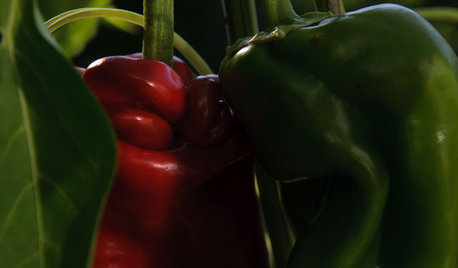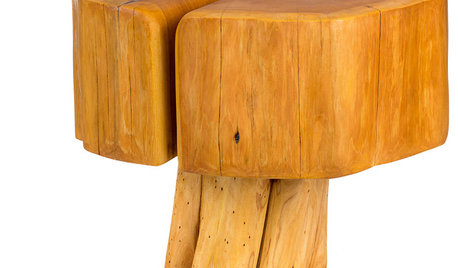peppers just wilting?
borderokie
10 years ago
Related Stories

GARDENING GUIDESSummer Crops: How to Grow Peppers
Some like 'em hot; others like them sweet. With the incredible range of peppers available for home gardens, you can have your pick
Full Story
DECORATING GUIDESDesign Details: Pepper a Space with Poufs
Keep Cushy Seats On Hand for Unexpected Guests and Casual-Chic Style
Full Story
SHOP HOUZZShop Houzz: Like Salt and Pepper
Cute and kitschy ways to say ‘I love you’ with themed salt and pepper shakers
Full Story
TRADITIONAL ARCHITECTURESaltbox Houses Pleasingly Pepper Landscapes
Refreshingly basic silhouettes and materials make saltboxes a simple architectural pleasure
Full Story
DECORATING GUIDES4 Classic Decorating Themes — and How to Work Them Just Right
Sail into nautical territory and more without hitting the land of overdone, with these decorating ideas that steer for subtlety
Full Story
GARDENING AND LANDSCAPING9 Whimsical Touches to Wake Up the Garden
If the August heat is wilting your enthusiasm, try these playful ideas to jump-start your gardening moxie
Full Story
GARDENING GUIDESEssential Watering Tips for Your Edible Garden
To give your edible plants just what they need, check out these guidelines for how, when and how much to water
Full Story
BLACKCooking With Color: When to Use Black in the Kitchen
Consider sampling Caviar or Cracked Pepper on your kitchen walls or cabinets for richness and impact
Full Story
PRODUCT PICKSGuest Picks: Beautiful Things You Can Feel Good About Buying
Upcycled, ecofriendly or just made responsibly, these home accessories and furniture pieces will keep your conscience clear
Full Story
SPRING GARDENINGSummer Crops: How to Grow Strawberries
Pluck your own sweet strawberries right from the garden vine for smoothies, salads or eating then and there
Full StoryMore Discussions







helenh
Okiedawn OK Zone 7
Related Professionals
Cottonwood Landscape Architects & Landscape Designers · Kyle Landscape Architects & Landscape Designers · Montgomeryville Landscape Architects & Landscape Designers · Forest City Landscape Architects & Landscape Designers · Wilmington Landscape Contractors · Tempe Landscape Contractors · Ashburn Landscape Contractors · Golden Gate Landscape Contractors · La Mirada Landscape Contractors · Austin Decks, Patios & Outdoor Enclosures · Aberdeen Decks, Patios & Outdoor Enclosures · Gaithersburg Decks, Patios & Outdoor Enclosures · Morgan Hill Decks, Patios & Outdoor Enclosures · Myrtle Beach Decks, Patios & Outdoor Enclosures · Racine Decks, Patios & Outdoor EnclosuresborderokieOriginal Author
borderokieOriginal Author
borderokieOriginal Author
Okiedawn OK Zone 7
borderokieOriginal Author
Okiedawn OK Zone 7